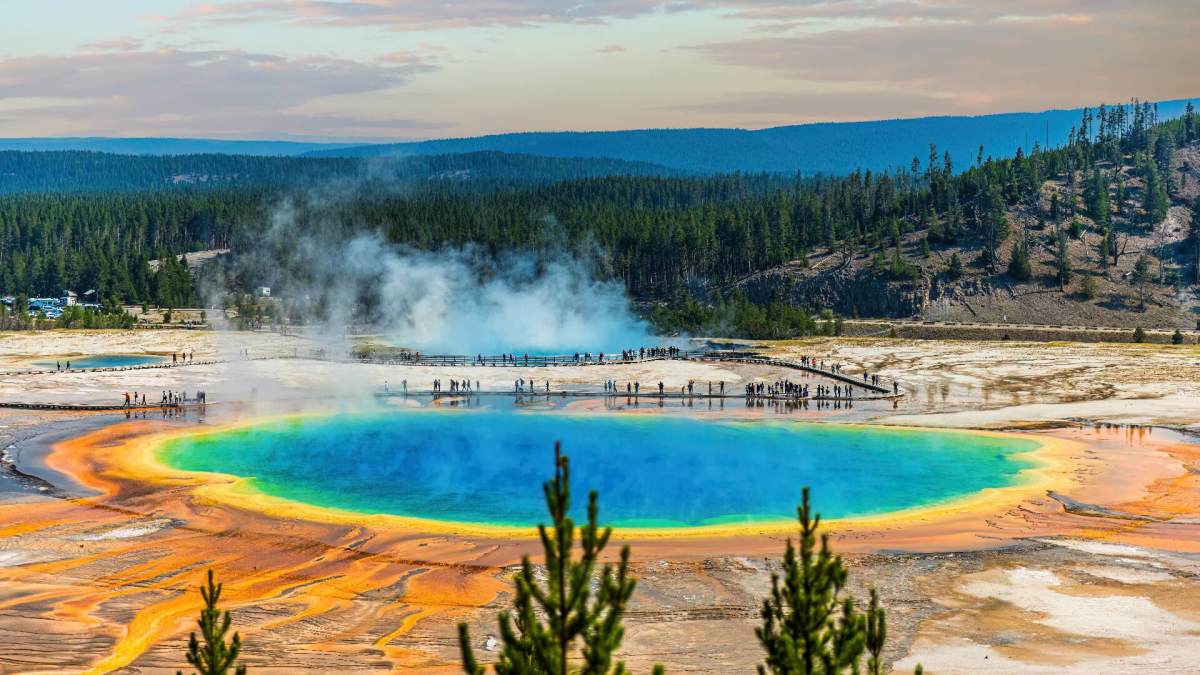While most visitors to Yellowstone National Park associate it with the iconic sight of roaming bison and the vibrant, psychedelic colors of the Grand Prismatic Spring, a significant portion of the park is actually situated atop a massive supervolcano.
This geological phenomenon is defined as an area capable of producing exceptionally large eruptions, specifically those that can expel at least 1,000 cubic kilometers of volcanic material. The Yellowstone Plateau Volcanic Field encompasses large regions across Wyoming, Montana, and Idaho, representing the underlying volcanic activity that shapes much of the park’s landscape.
Although the most recent lava flow occurred over 70,000 years ago, Yellowstone is replete with over 10,000 hydrothermal features that demonstrate ongoing geological activity. These include geysers, hot springs, fumaroles, and mud pots, which collectively showcase the park’s dynamic and ever-changing environment. Each of these features contributes to Yellowstone’s reputation as a geological wonder, offering visitors a glimpse into the Earth’s powerful natural processes.
On March 17, 2024, the U.S. Geological Survey (USGS) made an exciting announcement regarding a newly discovered volcanic vent in the park. Located at the base of an ancient lava flow, this vent has been actively emitting steam, with temperatures measured at an impressive 171 degrees Fahrenheit (77 degrees Celsius).
The continued billowing of smoke from this vent over the following months has intrigued scientists and sparked discussions about the potential implications for the surrounding geothermal landscape. This discovery underscores the ongoing geological research in Yellowstone and enhances our understanding of the supervolcano’s activity, reminding us that beneath the park’s stunning beauty lies a powerful and active geological system.







